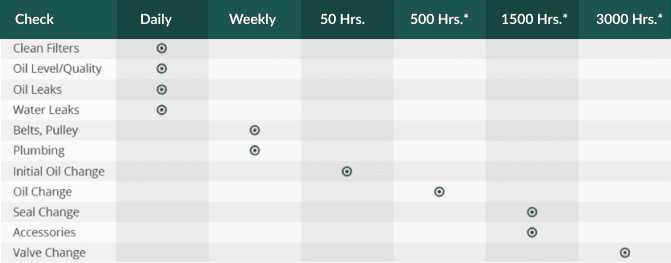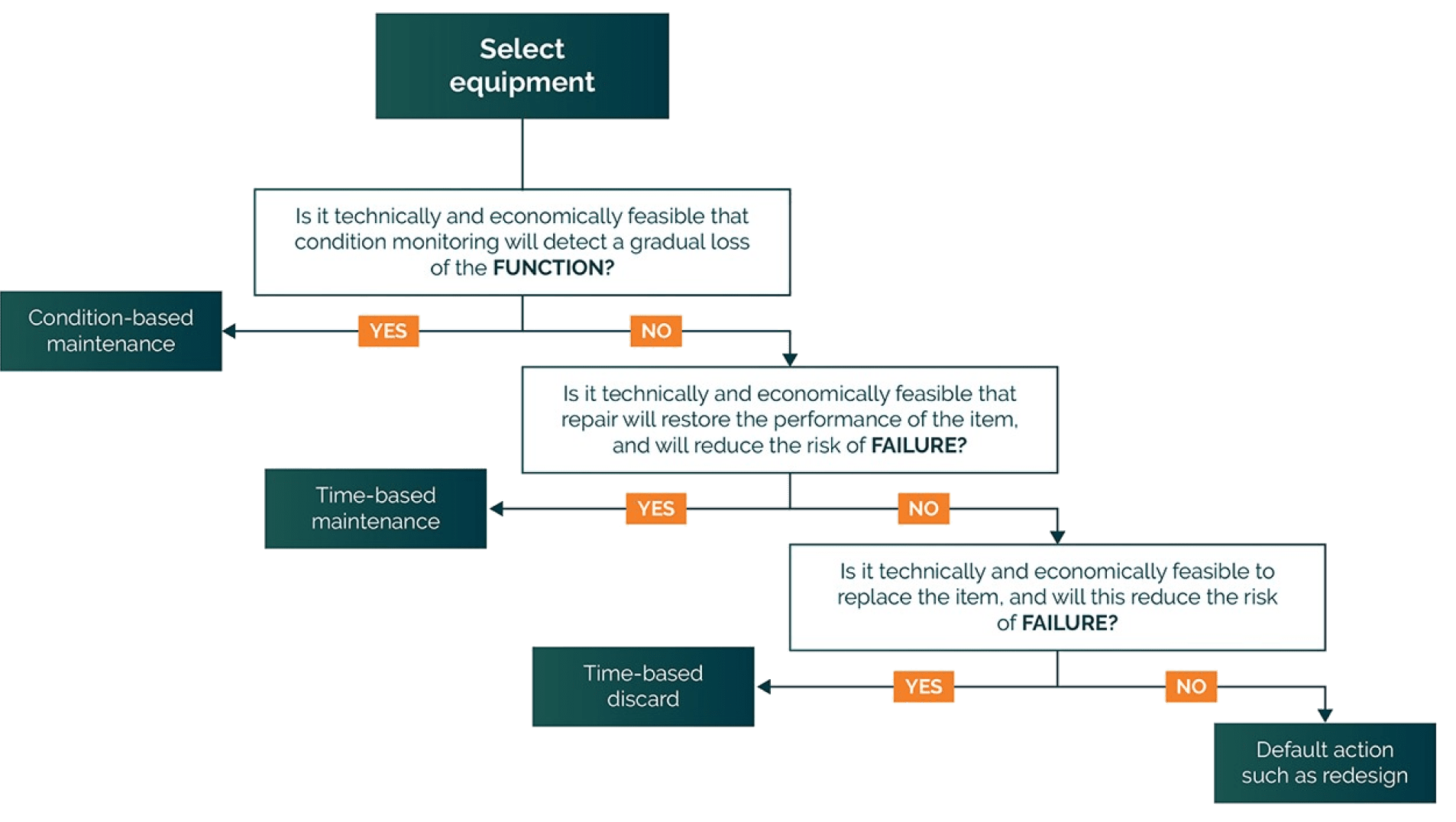Like many companies, yours probably has a zero-accident objective, and maybe also a zero-defect objective. But you can also aim
for zero-breakdown. To implement this, you will need to adopt a more proactive approach when it comes to maintenance either
with a time-based or age-based plan, or even through condition monitoring.

Basic preventative maintenance usually takes the form of a time-based maintenance schedule. It includes activities such as:
Here is an example of a time-based preventative maintenance plan for pumps:

Image credit: catpumps.co.uk
For a similar template (in Excel) here.
Another approach to planning preventative maintenance is to account for the age of the equipment, i.e. time in operation or number of cycles performed.
There are a series of questions you need to ask to establish which kind of preventative maintenance approach best suits your factory.
Here is a flowchart to sum up different maintenance approaches with the questions:

Chart Source: Maintenance, Replacement, and Reliability: Theory & Applications, 2nd edition, by Jardine and Tsang, CRC Press
For example, if it's not technically and economically feasible that condition monitoring will detect a gradual loss of the function, then a time-based maintenance approach might be more feasible.
Want to know how a preventive maintenance system helps cut costs and increase productivity? Click below.
